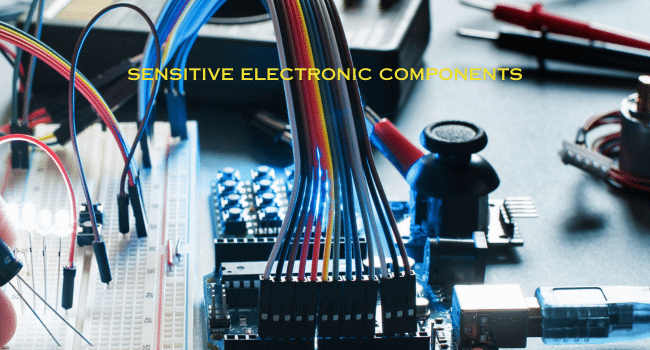Table of Contents
1. Introduction
In the electronics industry, static electricity is a common phenomenon that may be caused by human activity, equipment operations, or environmental changes. Sensitive electronic components—such as integrated circuits (ICs), microprocessors, memory units, and sensors—are particularly vulnerable due to their small size and complex structures. Electrostatic discharge (ESD) can lead to permanent damage to these components, thereby affecting the performance and reliability of the entire electronic system.
2. Generation of Static Electricity
Static electricity is generated by the accumulation of electrical charge. In dry environments, friction between the human body and clothing, or the contact and separation of equipment surfaces, can create static electricity. Additionally, the use of insulating materials like plastic and rubber may contribute to static buildup. During electronic manufacturing processes, the generation of static electricity is especially common, as many materials and operations on the production line can cause it.
3. Effects of Static Electricity on Electronic Components
The impact of static electricity on sensitive electronic components mainly includes the following aspects:
3.1 Physical Damage
The high voltage and current generated by ESD can cause physical damage inside electronic components, such as melting, burning, or breakdown. This type of damage is usually irreversible, leading to component failure.
3.2 Performance Degradation
Even if no physical damage occurs, ESD may still cause performance degradation of electronic components. For example, memory cells may lose data due to static electricity, and the sensitivity of sensors may decrease.
3.3 Reduced Reliability
ESD can reduce the reliability of electronic components and increase the failure rate. This is especially critical in mission-critical applications, such as medical devices, avionics, and military systems.
4. Damage Mechanisms of Electrostatic Discharge
The mechanisms by which ESD damages electronic components include:
4.1 Thermal Effects
The instantaneous high temperature produced by ESD can cause thermal damage inside components.
4.2 Electrical Effects
The high current from ESD may exceed the component’s tolerance, leading to electrical breakdown.
4.3 Mechanical Effects
The electric field generated by ESD may induce internal mechanical stress in components, resulting in structural damage.
5. Prevention and Protection Measures
To reduce the impact of static electricity on sensitive electronic components, the following preventive and protective measures can be taken:
5.1 Electrostatic Discharge (ESD) Procedures
Develop and strictly follow ESD procedures, including the use of antistatic workwear, antistatic flooring, and antistatic packaging materials.
5.2 Grounding and Shielding
Ensure all equipment and work surfaces are properly grounded to eliminate static charge accumulation. The use of shielding materials can help reduce the effects of ESD.
5.3 Humidity Control
Maintaining appropriate environmental humidity can reduce static generation. Generally, a relative humidity of 40% to 60% is considered ideal.
5.4 ESD Protection Devices
Use electrostatic discharge protection devices in circuits with sensitive components. Devices such as Transient Voltage Suppression (TVS) diodes and Metal Oxide Varistors (MOVs) can absorb the energy from ESD and protect components from damage.
6. Conclusion
Static electricity affects sensitive electronic components in various ways, including physical damage, performance degradation, and reduced reliability. By implementing proper preventive and protective measures, the damage caused by static electricity can be significantly reduced, thereby improving the reliability and lifespan of electronic equipment. As electronic technology continues to advance, the management and protection against electrostatic discharge will become increasingly important.
